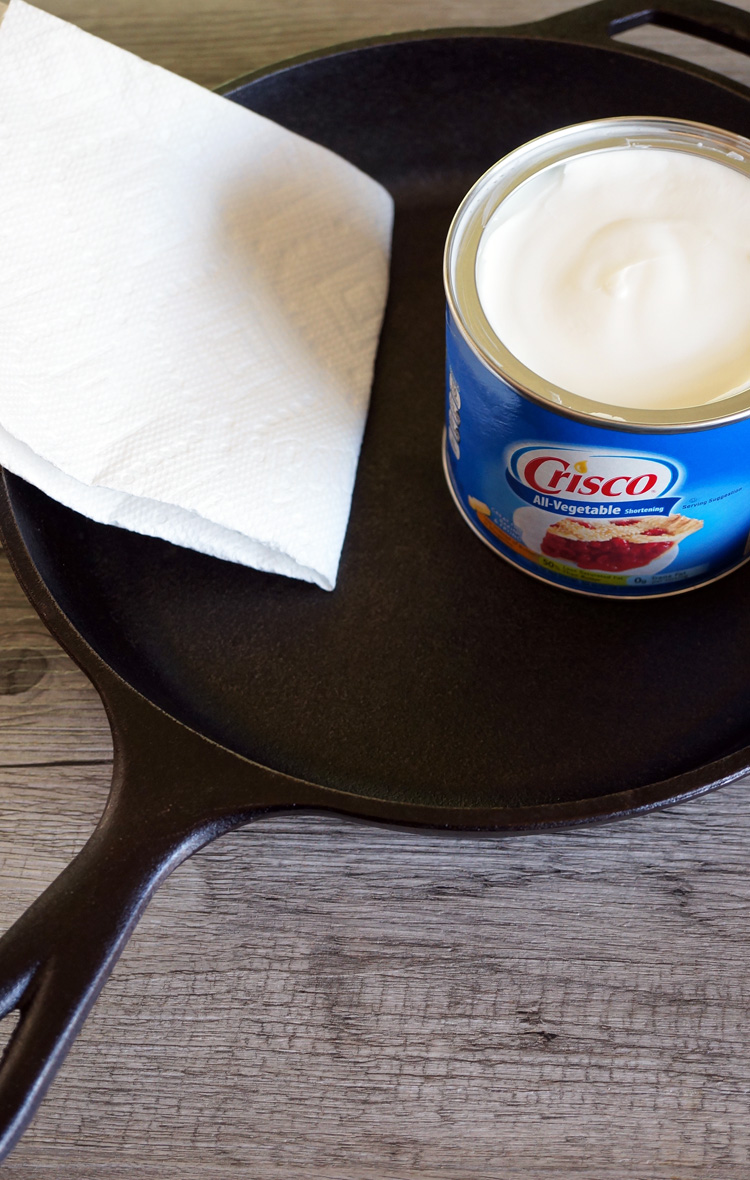 My mother-in-law had two beautiful cast iron skillets that I loved to use when I cooked in her kitchen. When I moved to the U.S., I bought a couple of my own. Cooking in a cast iron skillet increases the iron content in food. The longer the food is in contact with the skillet the more iron it will absorb. Cast iron skillets can be used to cook on the stove, the oven or the grill.
My mother-in-law had two beautiful cast iron skillets that I loved to use when I cooked in her kitchen. When I moved to the U.S., I bought a couple of my own. Cooking in a cast iron skillet increases the iron content in food. The longer the food is in contact with the skillet the more iron it will absorb. Cast iron skillets can be used to cook on the stove, the oven or the grill.
You may ask, what is seasoning and why do I need to season my cast iron skillet? Coating your cast iron skillet with cooking oil or shortening and baking it in an oven at 350° F for an hour is called seasoning. This process makes the surface of your cast iron skillet non-stick.
This past weekend, I used my cast iron skillet to make a scrumptious apple pie. I will share the recipe with you soon. But first, I want to share some easy steps on how to season your cast iron skillet. If taken care of properly, a good cast iron skillet can last a lifetime. It can be passed down to your children as an heirloom. I bet they will be happy to inherit it.
Here are the steps on how to season your cast iron skillet:
1. Preheat oven to 350°F.
2. Wash the skillet with warm, soapy water. Use a sponge or stiff brush to clean grime.
3. Rinse and dry thoroughly.
4. Use a paper towel or a piece of cloth to apply a thin coat of vegetable oil or melted vegetable shortening to the inside and outside of the skillet.
5. Place the skillet upside down on the oven’s center rack.
6. Place a sheet of aluminum foil below the rack to catch any particles or oil that may drip.
7. Bake for one hour.
8. Turn off the oven and allow the skillet to cool completely, before taking it out of the oven.
– Acidic foods, like tomatoes and beans, can damage the surface of your skillet. So cook them after your skillet is well seasoned.
– To clean cast iron pans, just rinse in hot water. No need for soap. Scrub with non-metallic brush, rinse, wipe, put a very thin coat of oil, and put it in your cupboard. Use just enough oil to bring back the sheen on the surface of your skillet. It shouldn’t be sticky.
– When food starts sticking on the surface of your skillet you know it is time to re-season.
